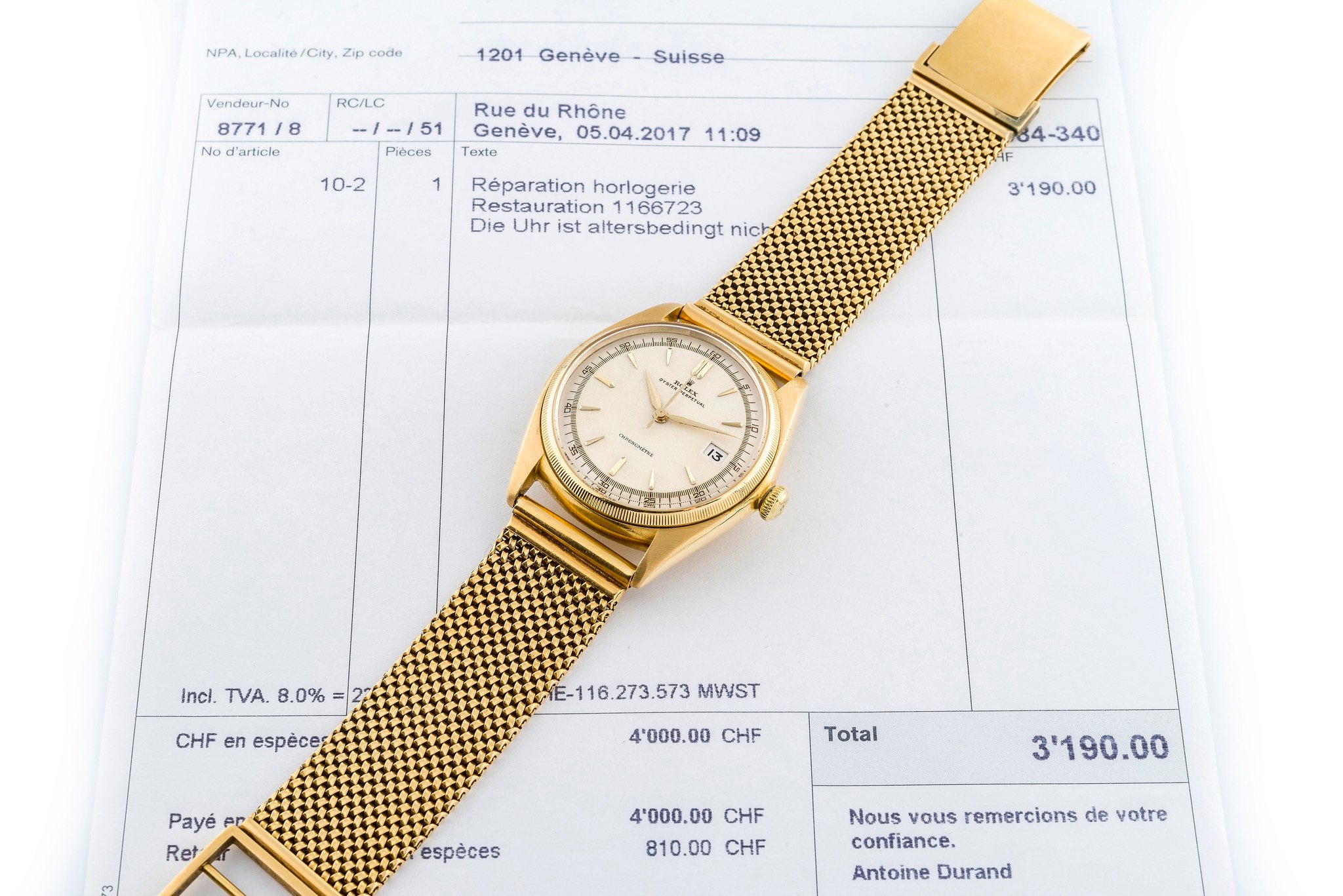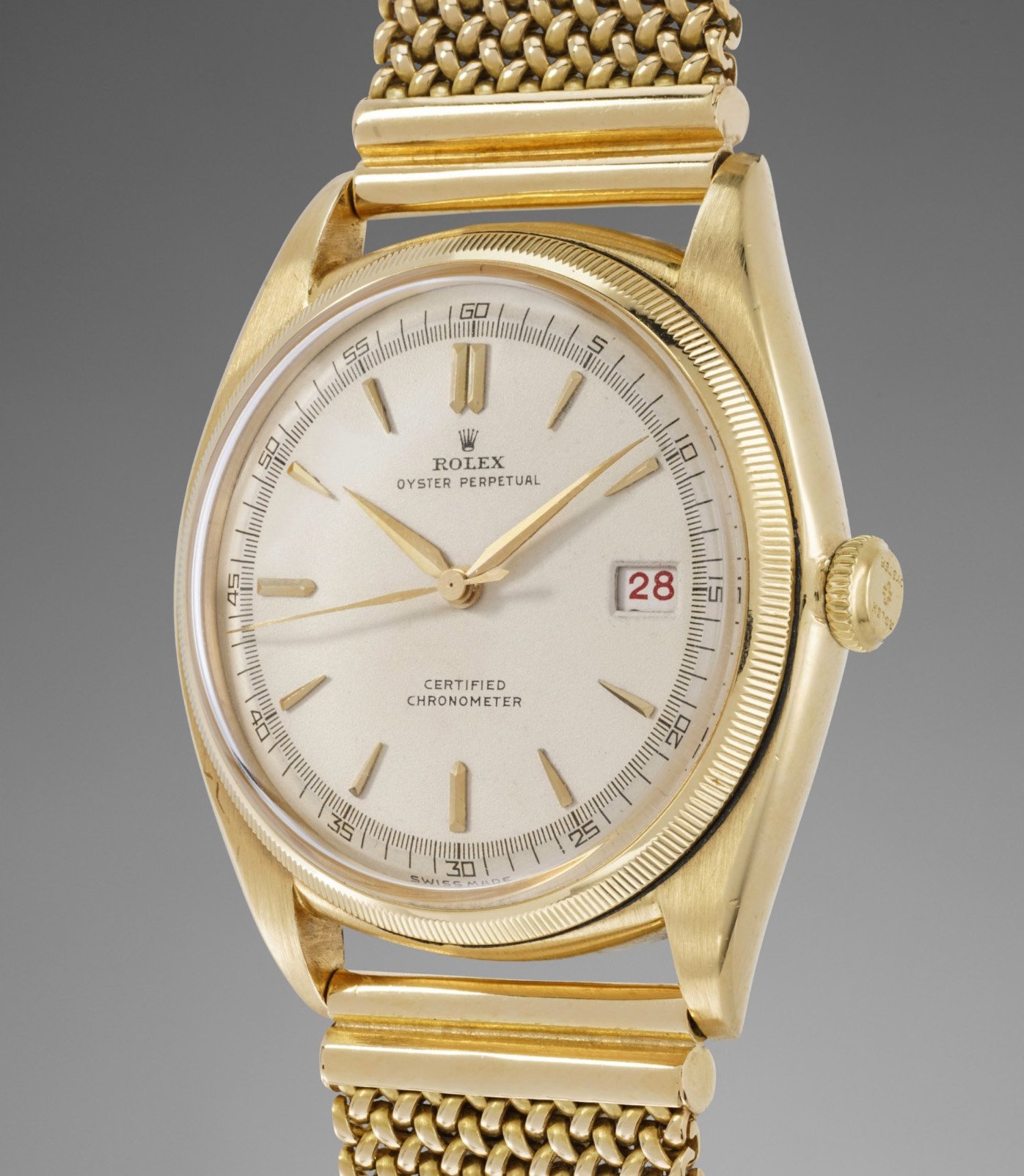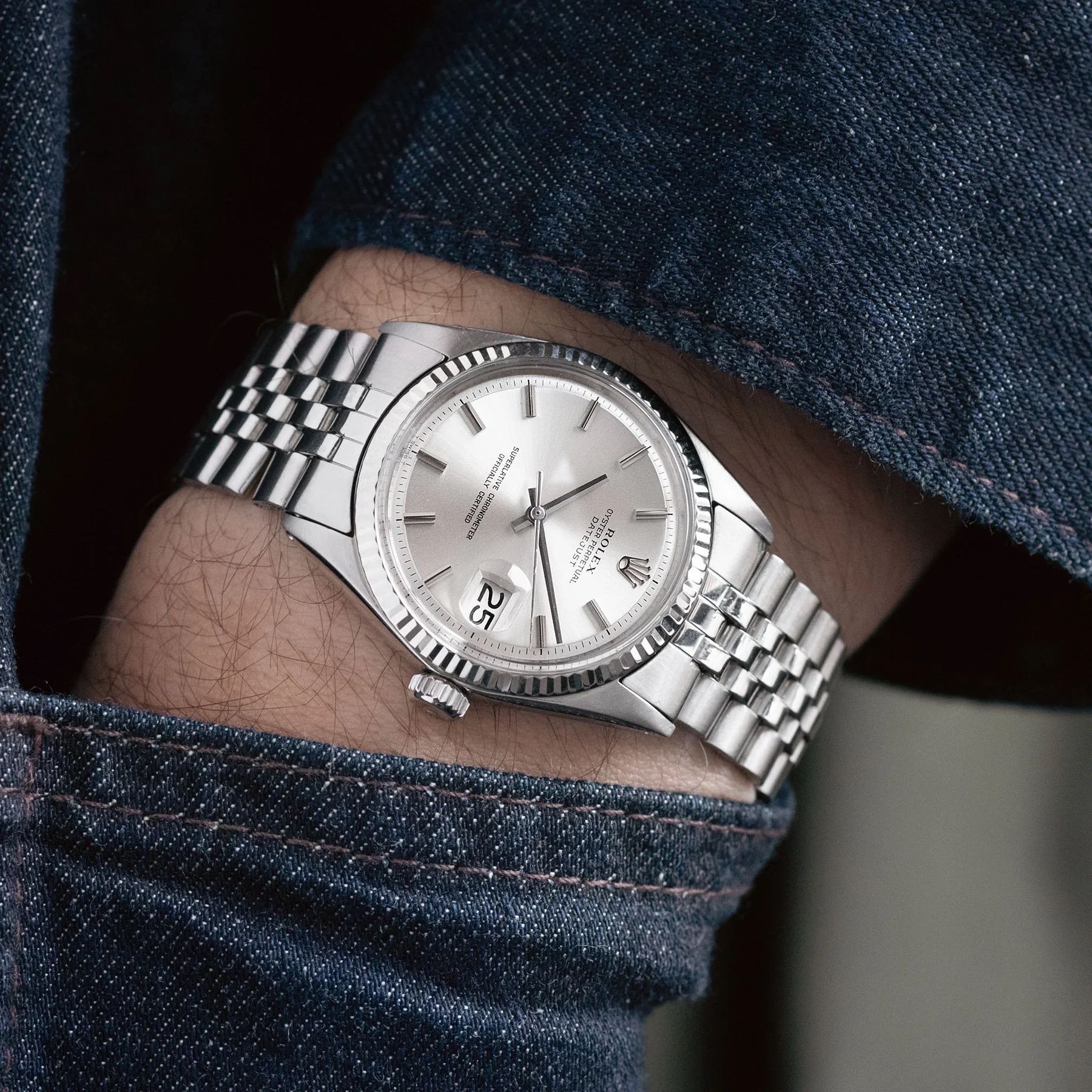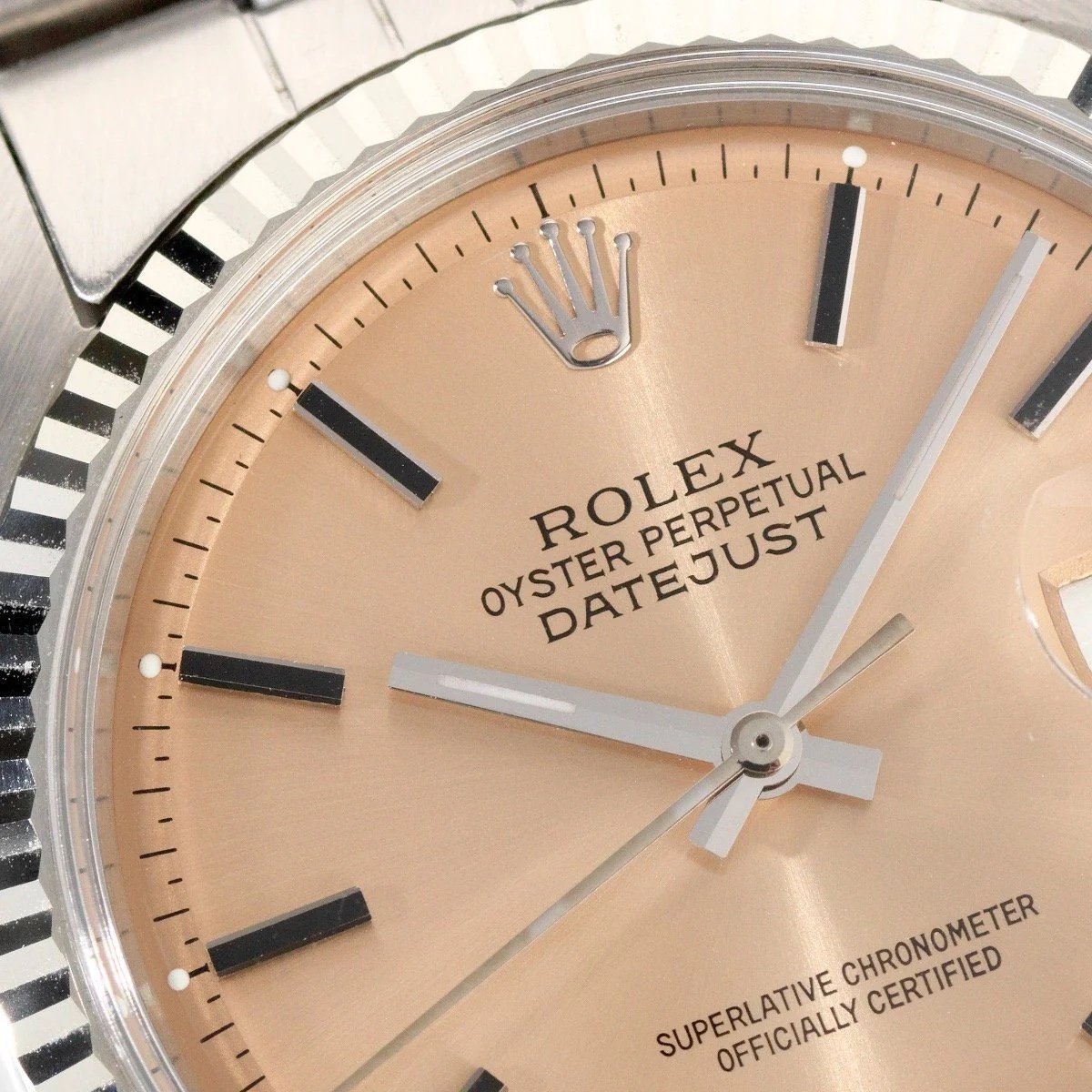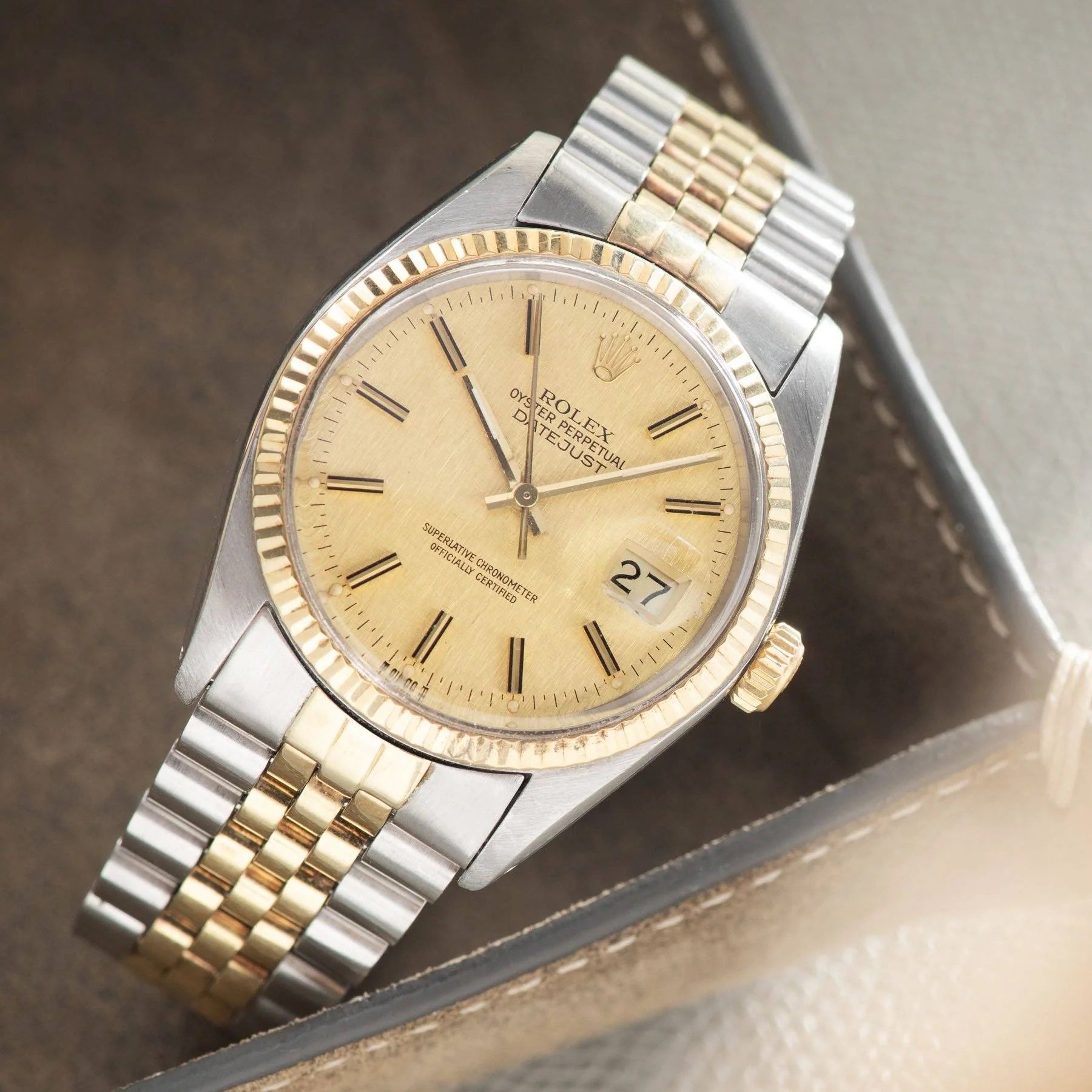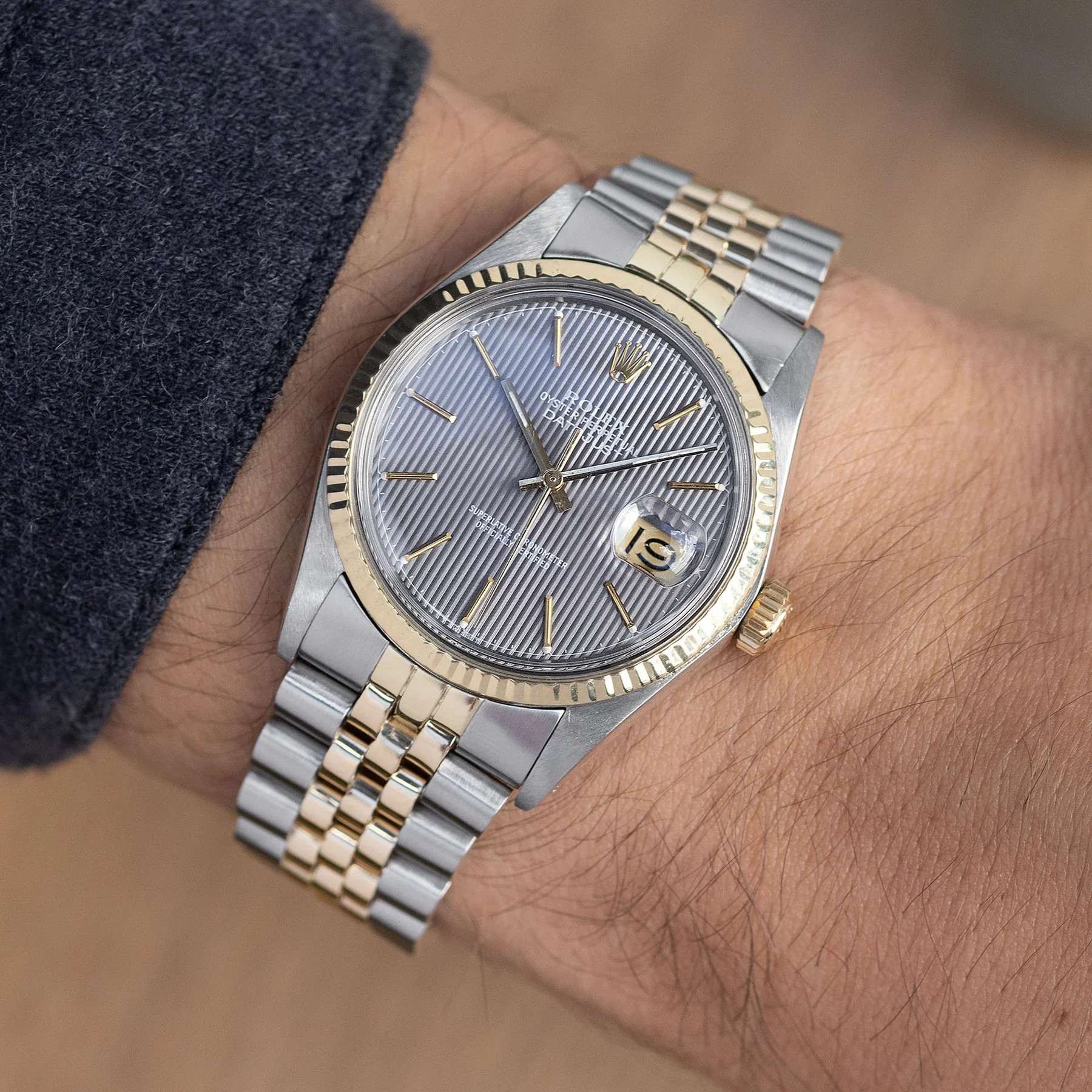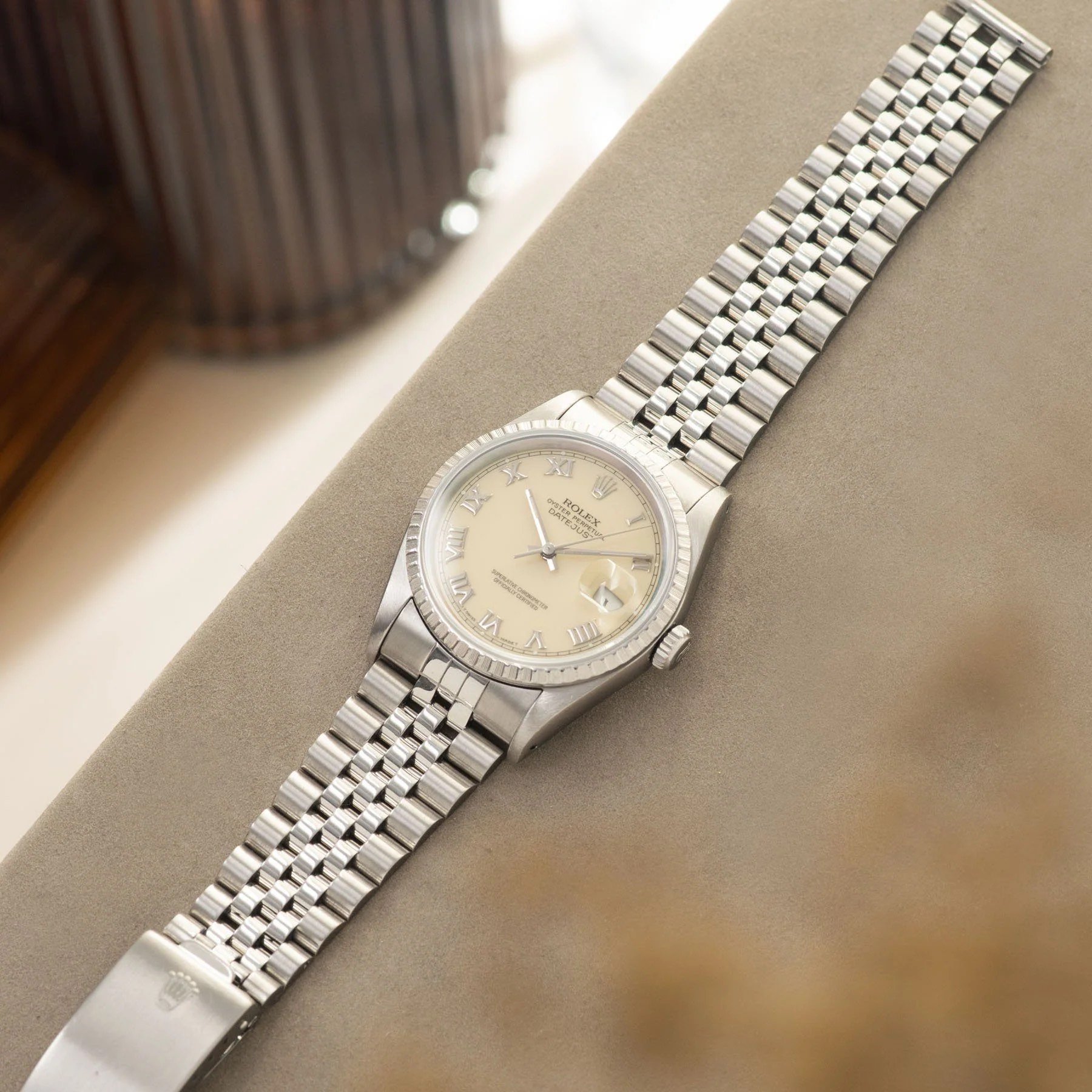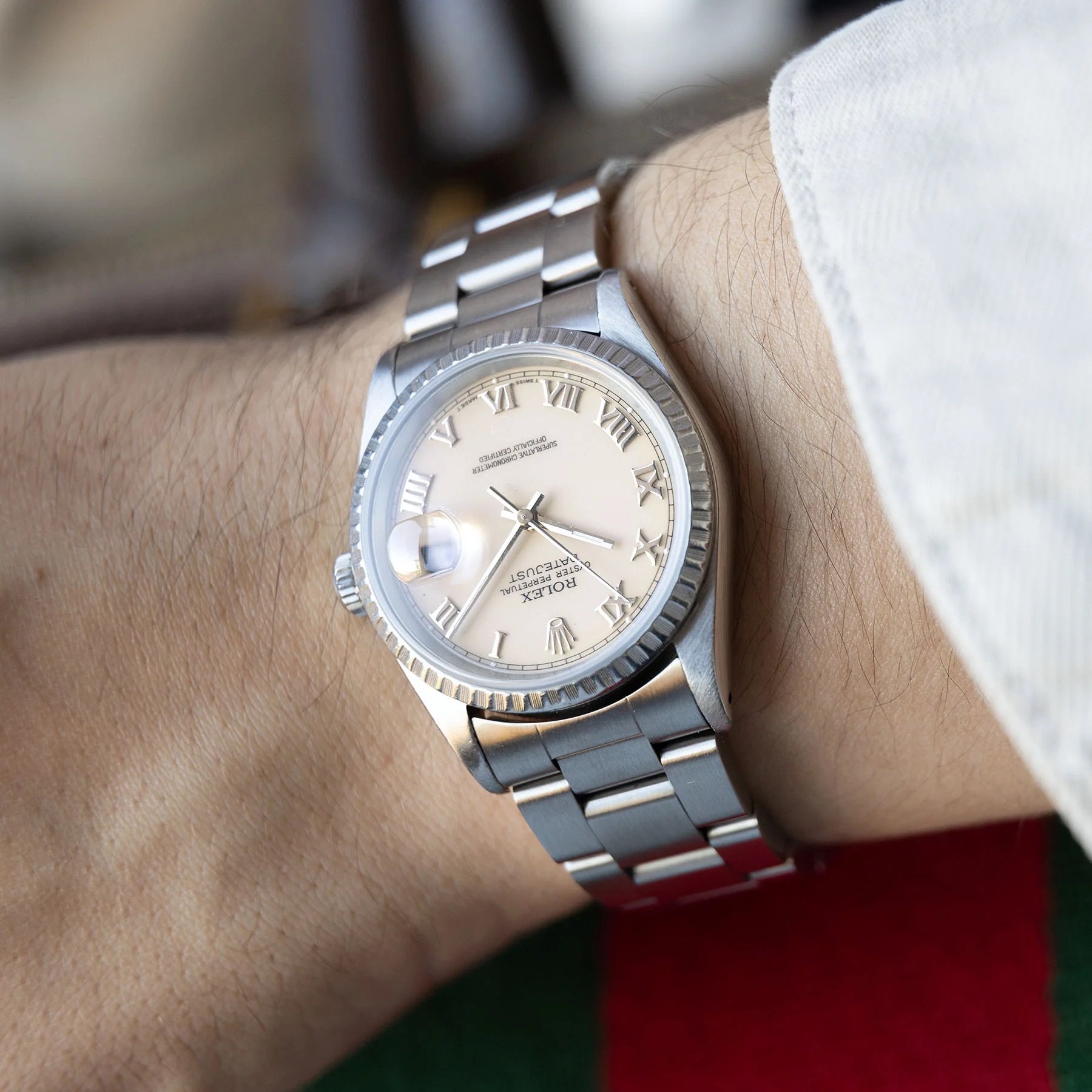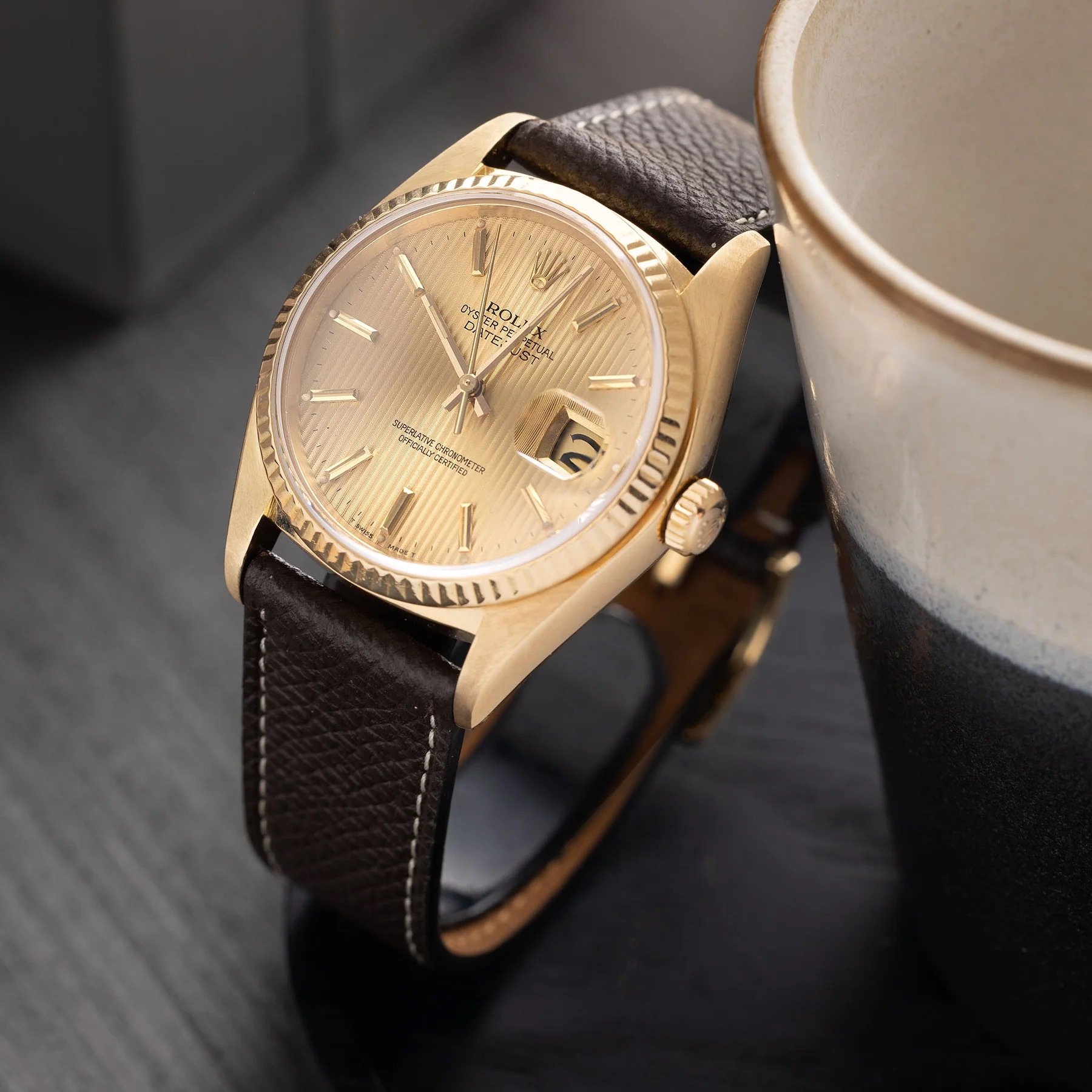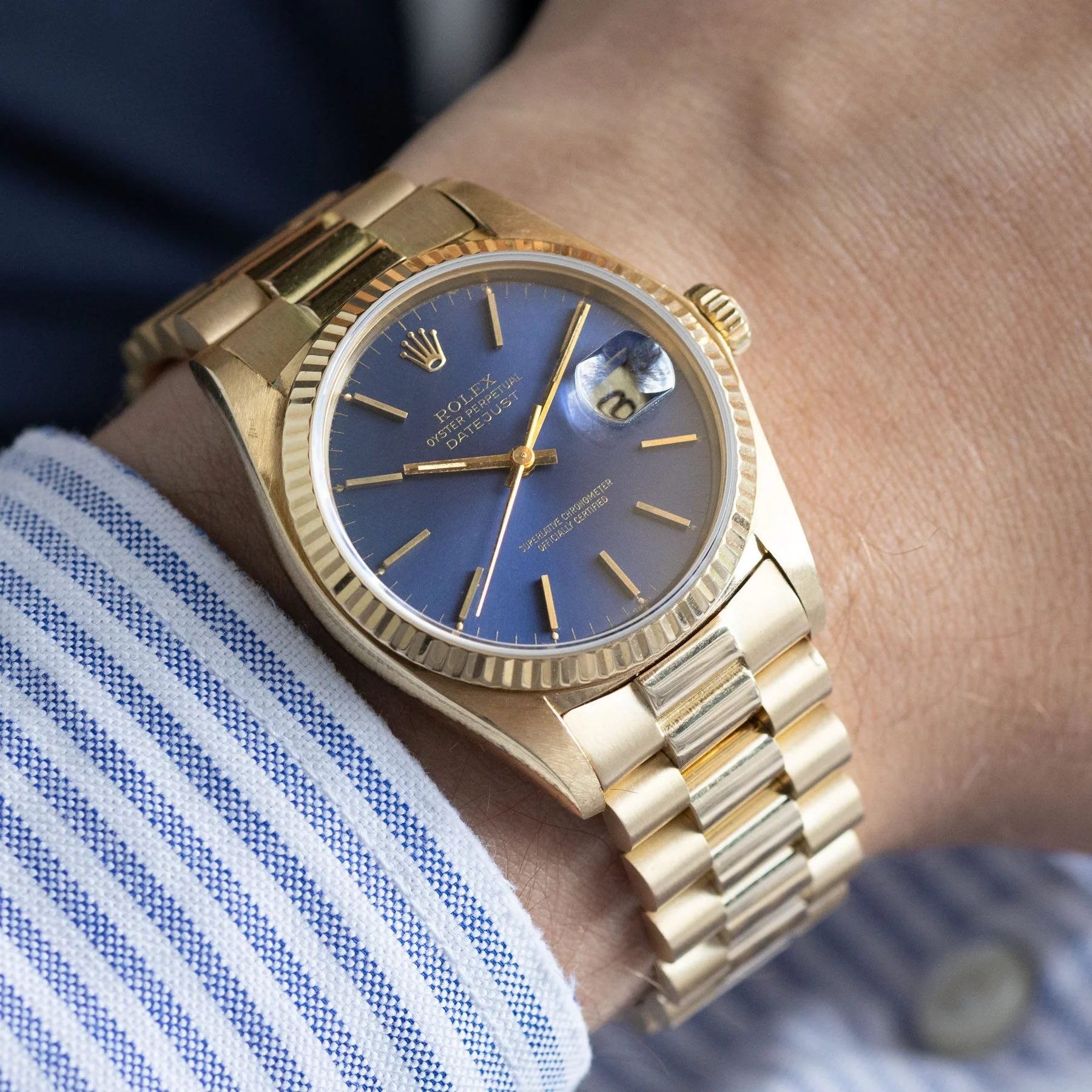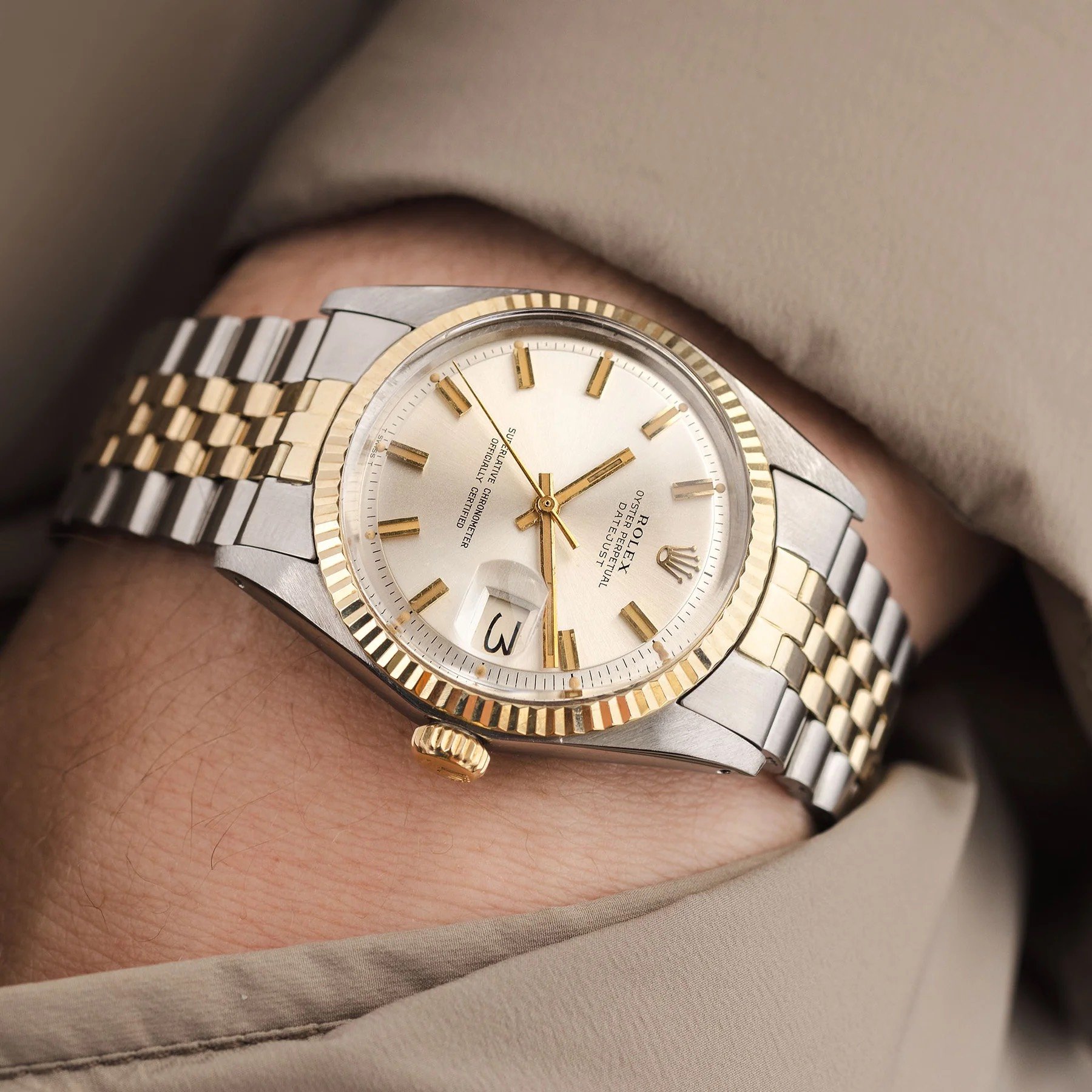Fratello’s Top 5 Rolex Datejust References Ever Created
Another Friday, another Top 5! In this series, we take one classic watch and choose our five favorite references ever produced. Four of these references will be based on the historical importance of the specific watch in the grand scheme of things. Though there may be some overlap, it’s not a question of which references are the most collectible or of the highest value on the market. The fifth pick is our Fratello favorite that considers the current market price and collectability, potentially making it a sleeper reference. As such, the last pick could be described as our wild card. This week, we’ll take a look at the best Rolex Datejust. Here are our five favorite Datejust references ever produced.
Sitting down with our in-house Rolex Datejust connoisseur Thomas van Straaten made sense for this list. As the writer of a book on the Rolex Datejust and a series of articles explaining the magic of his iconic watch, he is the perfect man to help pick the five references to highlight. Nevertheless, picking five is not easy or perhaps even doable. With almost every generation of the Datejust, there is the immediate question of whether to go for a smooth, fluted, or engine-turned bezel. It’s more a matter of personal preference than one of historical importance in the development of the watch. In addition, with the Datejust having such a long history, we decided to pick an outstanding version from various generations to help you visualize the versatility and brilliance of the watch. Without further ado, let’s get into it!
Rolex Datejust ref. 4467
We’ll start at the beginning, of course, with the first Datejust, one that actually did not have the model name on the dial. While it started the Datejust lineage, we are looking at an inherently different watch. The Rolex ref. 4467 was introduced in 1945 to celebrate the 40th anniversary of the brand. Only available in 18K yellow gold at first and later also in red gold, it was the flagship of the Rolex lineup. The watch is also known as the Datejust “Ovettone” (Italian for “big egg”) as its 36mm “Bubble Back” case is shaped like an egg. Both its size and shape made this an oversized case at the time of introduction. It came with a beautiful coin-edge bezel, bringing a great dose of finesse to the overall design.
Rolex equipped the ref. 4467 with its caliber A295, which came with a date function shown at 3 o’clock on the dial. The date discs came in different executions, including the famous roulette in red and black as well as fully black and fully red versions. Importantly, the watch did not feature the famous Cyclops magnifier yet, which would later become one of the defining elements of the Datejust. A new element, however, was the five-link Jubilee bracelet (not shown here). It was the brand’s first in-house-designed bracelet that was specially created for the watch. The dial design features old-school Rolex elements like spearhead hour markers and leaf-shaped hands. On the outside of the indices, we find the characteristic and refined 60-minute/seconds track. This is simply a stunning vintage piece that introduced the Datejust aesthetic and nowadays will fetch roughly €20K and up depending on the condition.
Rolex Datejust ref. 1601
Now we fast-forward to 1959 when Rolex introduced the Datejust ref. 16xx. This series consisted of the ref. 1600 with a smooth bezel, ref. 1601 with a fluted bezel always in precious metal, and ref. 1602 with an engine-turned bezel. A fun fact that Thomas explained in his Datejust Buying Guide article is that the engine-turned-bezel actually was produced in gold as well as steel. However, the overwhelming majority of ref. 1602 watches had a steel bezel. All three references featured a pie-pan dial with a lowered minute track.
The Datejust ref. 16xx was produced from 1959 to 1977, and Rolex used two different calibers in that period. The first is the caliber 1565, which was replaced by the 1575 movement in 1965. The latter increased the operation frequency from 18,000vph to 19,800vph. Now, when it comes to choosing a favorite, how about the steel ref. 1601 with a fluted white gold bezel? The classic Datejust aesthetic made it such an instantly recognizable icon, and almost 55 years after its introduction, it still is an absolute stunner.
Rolex Datejust ref. 16013
Talk about stunners! We have to include a two-tone Datejust with a Jubilee bracelet in this list. While the gold and steel version was also available in the previous four-digit generation, we started seeing some brilliant, extravagant options with the ref. 16013, which was part of the five-digit ref. 16xxx generation. The ref. 16xxx models were introduced in 1977 and no longer featured pie-pan dials. Instead, Rolex opted for flat dials, which lacked the depth that the four-digit references had. But don’t be fooled because there are indeed plenty of great dials out there for the five-digit models.
The biggest update came in the form of the new caliber 3035 with a quickset date feature. If you’re in the market for a vintage Datejust, the quickset date is definitely one thing to keep in mind. In terms of references, there was the smooth-bezel ref. 16000 in steel, the fluted-bezel ref. 16014 in steel, the fluted bezel ref. 16013 in two-tone, and lastly, the engine-turned-bezel ref. 16030 in steel. Now, as we already touched upon, a two-tone version of the ref. 16013 could be a great option, and I suggest exploring the wide variety of different dials because you might be able to find some amazing ones. Normally, I would recommend going for one with a gold dial, but just looking at the two dials pictured here, you’ll understand there are some stunning options. The first is a gold linen dial, and the second is a stunning gray tapestry dial. Both are great for some over-the-top ’70s/’80s swagger.
Rolex Datejust ref. 16220
The next big update came in 1988 with the Datejust ref. 162xx series. The biggest update that Rolex introduced was a new movement, shifting from the caliber 3035 to the 3135. The new movement was an update of the previous caliber and featured a full balance bridge, a larger balance wheel, and an increased jewel count, going from 27 to 31 jewels. Another big update was the use of sapphire crystals for the different references, replacing the acrylic crystals that had been in use until that point. The smooth-bezel version became ref. 16200, the fluted bezel in steel ref. 16214, in two-tone ref. 16213, and finally, the engine-turned-bezel became ref. 16220.
When it comes to picking a favorite, I have always had a soft spot for a Datejust with Roman-numeral hour markers, especially if paired with a nice dial color. A good one would be the combo of a pink salmon dial with Roman numerals, but for this pick, I decided to go with a ref. 16220 with a cream-colored dial, Roman numerals, and an engine-turned-bezel. The big question is whether to go for a Jubilee or Oyster bracelet. Usually, it’s a no-brainer for me as I much prefer the Jubilee bracelet on a Datejust. However, I do have to say that an Oyster also looks fantastic on this specific version. Still, just for overall refinement, the Jubilee might just come out on top when given the choice.
Rolex Datejust ref. 16018
The Rolex Datejust ref. 16018 is our final pick and the wild card for this list. We could have also chosen the most current Datejust iteration or even the Datejust 41. But for many people on the Fratello team, the charm of the Datejust is in the 36mm versions, especially the vintage references. That’s why we went with the all-gold ref. 16018. Many of you might think that we chose this reference because some of these models featured some of the most stunning stone dials. But that’s not the only reason why we chose this one. Have you ever considered a Datejust in full gold? Most people, including me, will automatically gravitate toward a Day-Date when talking about a full-gold Rolex. But the Datejust began “life” as a full-gold watch, so opting for a gold version is not that strange at all.
Technically speaking, the ref. 16018 is the same as the ref. 16013, which I highlighted earlier in the article. The main difference is that the 36mm case is executed in 18K yellow gold. Combine the case with a spectacular dial and a classy leather strap, and you will no longer need a dress watch. The level of style and class that the Datejust shows is stunning. And the great thing is that you can buy a gold ref. 16018 on a leather strap in great condition for well under €10K. If you want to make a bolder statement, go for the same reference with a gold Jubilee bracelet. One can be yours starting at roughly €14K. Those versions show the true brilliance of the Datejust in its original form.
Final thoughts on the top Rolex Datejust references
There you have it — a small walk through Rolex Datejust history. As I already mentioned, a wide variety of references could have been featured in this article. We left out the modern six-digit ones, the bigger versions, and perhaps even your favorite Datejust model. That’s why this list is the starting point of a bigger discussion. What is your favorite Rolex Datejust reference and why? Let us know in the comments section below. We will see you next week for another Top 5 list of references for a different classic watch.

